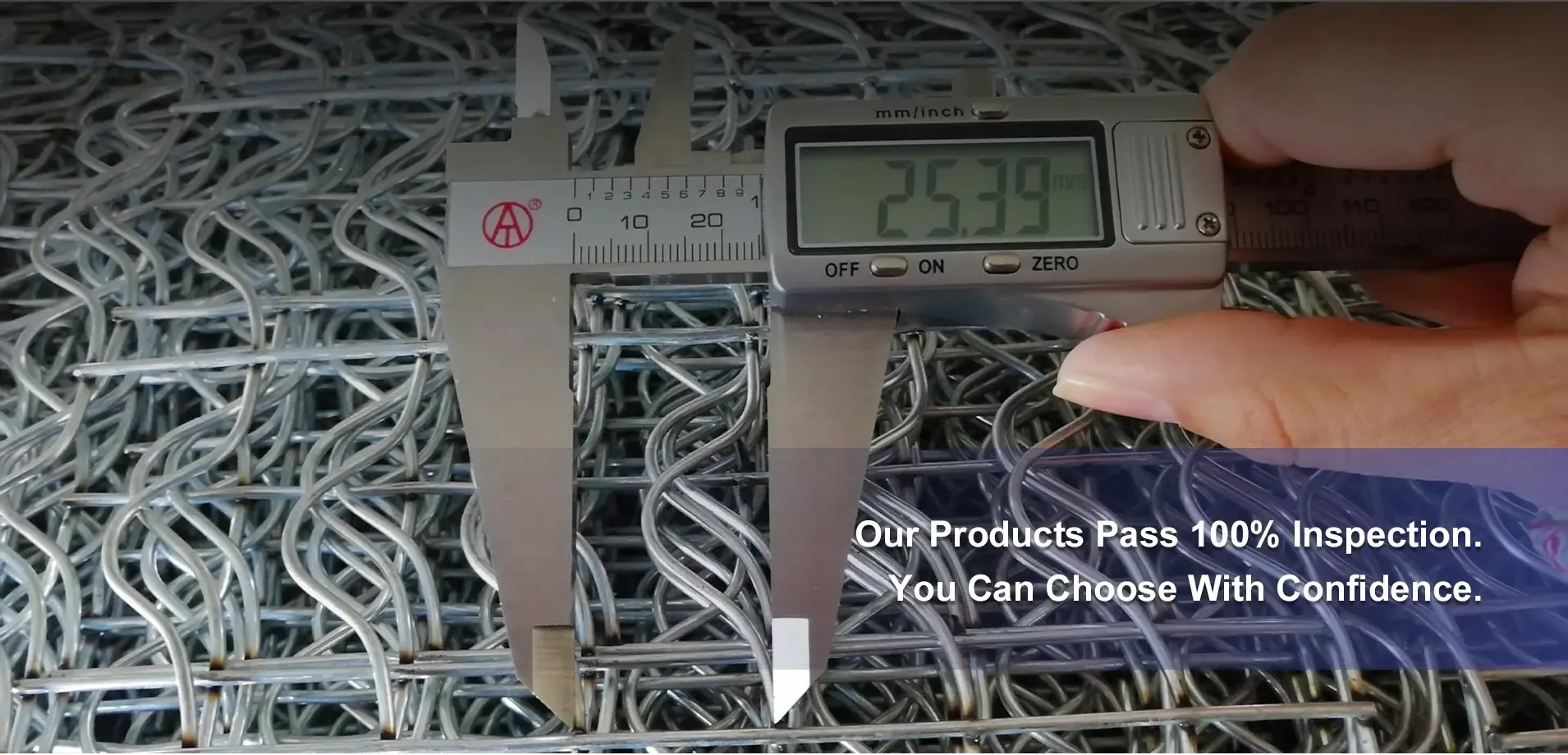- Industrial zone, South of Anping Town, Hengshui, Hebei, China.
- sales@hfpetromesh.com
- +86-18931809706
 Afrikaans
Afrikaans  Albanian
Albanian  Amharic
Amharic  Arabic
Arabic  Armenian
Armenian  Azerbaijani
Azerbaijani  Basque
Basque  Belarusian
Belarusian  Bengali
Bengali  Bosnian
Bosnian  Bulgarian
Bulgarian  Catalan
Catalan  Cebuano
Cebuano  Corsican
Corsican  Croatian
Croatian  Czech
Czech  Danish
Danish  Dutch
Dutch  English
English  Esperanto
Esperanto  Estonian
Estonian  Finnish
Finnish  French
French  Frisian
Frisian  Galician
Galician  Georgian
Georgian  German
German  Greek
Greek  Gujarati
Gujarati  Haitian Creole
Haitian Creole  hausa
hausa  hawaiian
hawaiian  Hebrew
Hebrew  Hindi
Hindi  Miao
Miao  Hungarian
Hungarian  Icelandic
Icelandic  igbo
igbo  Indonesian
Indonesian  irish
irish  Italian
Italian  Japanese
Japanese  Javanese
Javanese  Kannada
Kannada  kazakh
kazakh  Khmer
Khmer  Rwandese
Rwandese  Korean
Korean  Kurdish
Kurdish  Kyrgyz
Kyrgyz  Lao
Lao  Latin
Latin  Latvian
Latvian  Lithuanian
Lithuanian  Luxembourgish
Luxembourgish  Macedonian
Macedonian  Malgashi
Malgashi  Malay
Malay  Malayalam
Malayalam  Maltese
Maltese  Maori
Maori  Marathi
Marathi  Mongolian
Mongolian  Myanmar
Myanmar  Nepali
Nepali  Norwegian
Norwegian  Norwegian
Norwegian  Occitan
Occitan  Pashto
Pashto  Persian
Persian  Polish
Polish  Portuguese
Portuguese  Punjabi
Punjabi  Romanian
Romanian  Russian
Russian  Samoan
Samoan  Scottish Gaelic
Scottish Gaelic  Serbian
Serbian  Sesotho
Sesotho  Shona
Shona  Sindhi
Sindhi  Sinhala
Sinhala  Slovak
Slovak  Slovenian
Slovenian  Somali
Somali  Spanish
Spanish  Sundanese
Sundanese  Swahili
Swahili  Swedish
Swedish  Tagalog
Tagalog  Tajik
Tajik  Tamil
Tamil  Tatar
Tatar  Telugu
Telugu  Thai
Thai  Turkish
Turkish  Turkmen
Turkmen  Ukrainian
Ukrainian  Urdu
Urdu  Uighur
Uighur  Uzbek
Uzbek  Vietnamese
Vietnamese  Welsh
Welsh  Bantu
Bantu  Yiddish
Yiddish  Yoruba
Yoruba  Zulu
Zulu
- Afrikaans
- Albanian
- Amharic
- Arabic
- Armenian
- Azerbaijani
- Basque
- Belarusian
- Bengali
- Bosnian
- Bulgarian
- Catalan
- Cebuano
- Corsican
- Croatian
- Czech
- Danish
- Dutch
- English
- Esperanto
- Estonian
- Finnish
- French
- Frisian
- Galician
- Georgian
- German
- Greek
- Gujarati
- Haitian Creole
- hausa
- hawaiian
- Hebrew
- Hindi
- Miao
- Hungarian
- Icelandic
- igbo
- Indonesian
- irish
- Italian
- Japanese
- Javanese
- Kannada
- kazakh
- Khmer
- Rwandese
- Korean
- Kurdish
- Kyrgyz
- Lao
- Latin
- Latvian
- Lithuanian
- Luxembourgish
- Macedonian
- Malgashi
- Malay
- Malayalam
- Maltese
- Maori
- Marathi
- Mongolian
- Myanmar
- Nepali
- Norwegian
- Norwegian
- Occitan
- Pashto
- Persian
- Polish
- Portuguese
- Punjabi
- Romanian
- Russian
- Samoan
- Scottish Gaelic
- Serbian
- Sesotho
- Shona
- Sindhi
- Sinhala
- Slovak
- Slovenian
- Somali
- Spanish
- Sundanese
- Swahili
- Swedish
- Tagalog
- Tajik
- Tamil
- Tatar
- Telugu
- Thai
- Turkish
- Turkmen
- Ukrainian
- Urdu
- Uighur
- Uzbek
- Vietnamese
- Welsh
- Bantu
- Yiddish
- Yoruba
- Zulu
metal grating load tables
Understanding Metal Grating Load Tables A Comprehensive Overview
Metal grating is an essential component in various industrial applications, serving as a durable and reliable solution for flooring, walkways, and drainage systems. To ensure safety and performance, it is crucial to understand the load-bearing capacities of these gratings, which are often detailed in load tables. This article will explore the significance of metal grating load tables and how they aid in the selection process for different applications.
Metal grating is typically manufactured from materials such as aluminum, steel, or stainless steel. Its structural integrity allows it to withstand various loads, making it suitable for pedestrian traffic, vehicular movement, and even heavy industrial equipment. However, the specific load capacity depends on several factors, including the type of grating, the spacing of the supports, and the load distribution.
Load tables provide essential data regarding the maximum load that a given metal grating can support without deforming or failing. These tables typically present values for different types of loads, including live loads (those resulting from the use of the structure, such as people and vehicles) and dead loads (the weight of the grating itself along with any permanent installations). The information is often categorized by the type of grating—such as bar grating or grid grating—and its dimensions.
metal grating load tables

When selecting metal grating for a particular application, engineers and designers must reference these load tables to determine the appropriate grating type and configuration. For instance, a manufacturing facility may opt for a heavy-duty steel grating to accommodate forklifts and heavy machinery, while a pedestrian walkway might require a lighter alloy to ensure user safety without unnecessary weight.
Moreover, load tables also account for varying environmental conditions that might affect the grating's performance. Factors such as temperature fluctuations, exposure to chemicals, and corrosion potential can all influence the longevity and effectiveness of metal grating. Understanding these elements is vital for ensuring that the selected grating will not only serve its intended purpose but also maintain its integrity over time.
In addition, it is important to note that load tables often include safety factors, providing additional assurance that the grating will perform adequately under unforeseen circumstances. These safety factors account for variables such as uneven load distribution and dynamic loads that fluctuate during usage. Thus, engineers can confidently design structures that are both safe and reliable.
In conclusion, metal grating load tables are a fundamental resource in the selection and application of metal gratings across various industries. By providing detailed information on load capacities and safety factors, these tables help engineers and architects make informed decisions, ensuring the safety and efficacy of their designs. Understanding and utilizing these tables not only enhances performance but also contributes to the longevity of grating installations, making them a critical aspect of infrastructure development. Whether for pedestrian walkways or heavy industrial applications, a thorough comprehension of load tables ensures that metal grating serves its purpose effectively and safely.
-
Why Our Shaker Screen for Sale Stands Out in Every ApplicationNewsAug.08,2025
-
Unmatched Efficiency with Premium Shale Shaker Screen TechnologyNewsAug.08,2025
-
Reliable, Durable, and Cost-Effective: Press Locked Steel Grating SolutionsNewsAug.08,2025
-
Precision Strength with Welded Steel Bar GratingNewsAug.08,2025
-
Perimeter Safety Netting: The High-Strength Shield for Elevated Safety SolutionsNewsAug.08,2025
-
Maximize Performance with Steel Walkway GratingNewsAug.08,2025